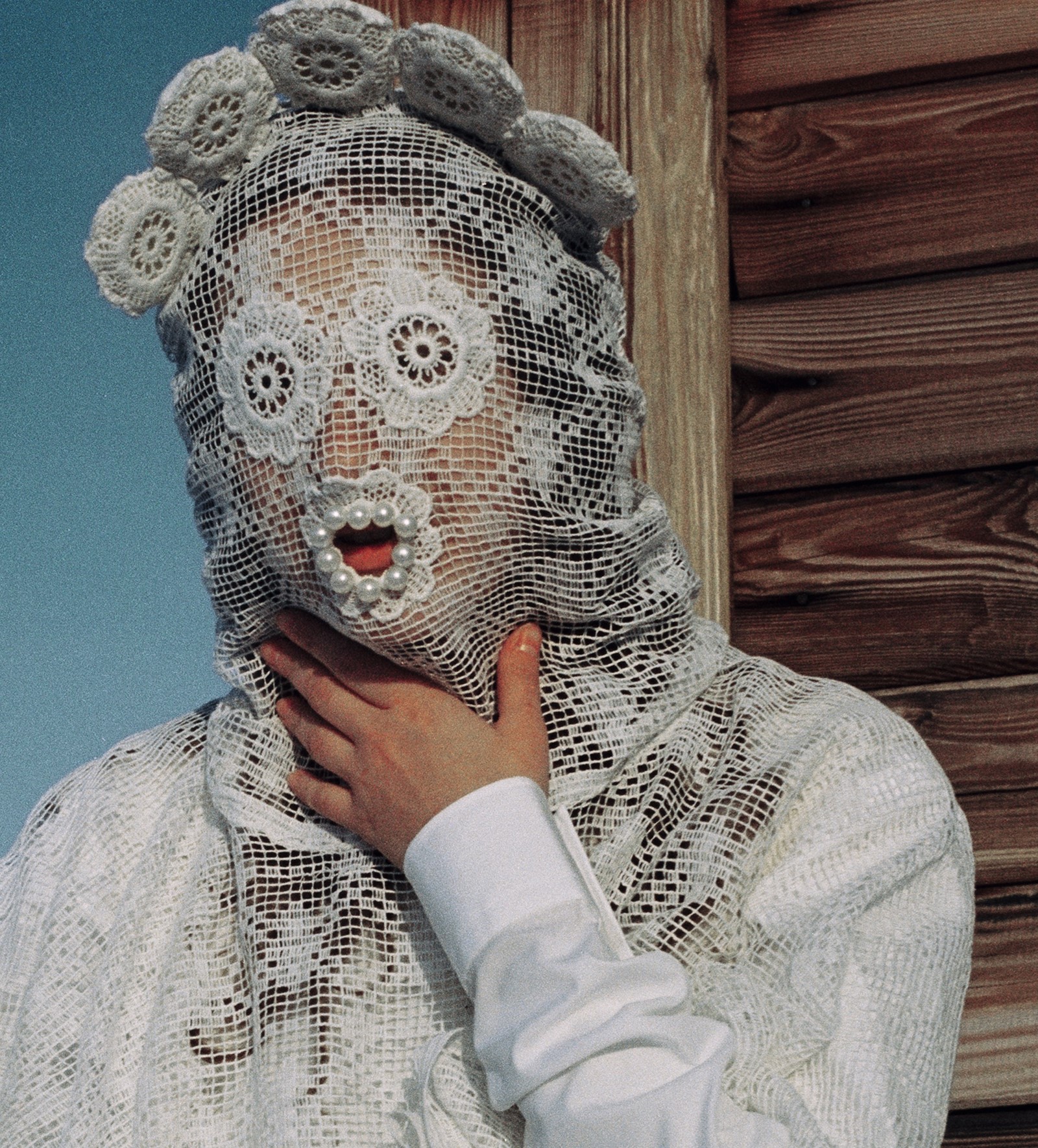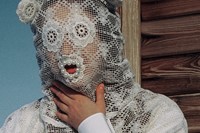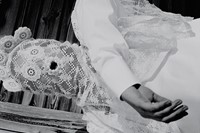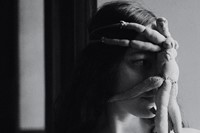In one of her pictures on Instagram, Alice Hualice (also known as Alisa Gorshenina) stands on top of a hill in the Russian city of Nizhny Tagil. The artist, who appears in AnOther Magazine S/S20 in a collaboration with photographer Jack Davison and AnOther Magazine’s senior fashion editor Nell Kalonji, wears a long burgundy trench coat and a mask of her own making – a surreal character in a landscape where silhouettes of trees merge with those of countless factories. Nizhny Tagil is located close to the Ural Mountains, a mythical border between Europe and Asia. With just over 350,000 people, it’s a small town by Russian standards – but Hualice has made it the centre of her creative universe, where day-to-day life is interwoven with her immersive visions.
“As long as I can remember myself, I’ve been into drawing and making things by hand. My parents used to call me an artist, so maybe I convinced myself I was, but it’s one thing I always truly enjoyed. I drew when I was bored, I drew when I had fun, I drew when I was hurt or bullied,” Hualice says. “With my work, I found my own way to tell the world about my feelings, even if no one was interested. I fulfill my need to talk, express my thoughts – but in my own wordless language.”
“With my work, I found my own way to tell the world about my feelings, even if no one was interested. I fulfill my need to talk, express my thoughts – but in my own wordless language” – Alice Hualice
Hualice spent her early childhood in the village of Yakshina before moving to Nizhny Tagil with her family at the age of six. She admits that being surrounded by nature was important for her creativity, “though it’s not as much the places but different life situations, good and bad, which made me who I am”. Hualice cites ancient Russian jewellery and crafts among her other inspirations. But at its core, what she does is personal and autobiographical storytelling through imagery and hand-crafted objects. She makes wearable sculptures which can take the shape of masks, dresses, jewellery or headpieces – they are more than just garments, they are artefacts and talismans, part of the artist’s story. Lace balaclavas, voluminous Louise Bourgeois-esque hands, pearl-encrusted eyes – at times uncanny, at times joyful, at times erotic or strange, they manifest her inner life.
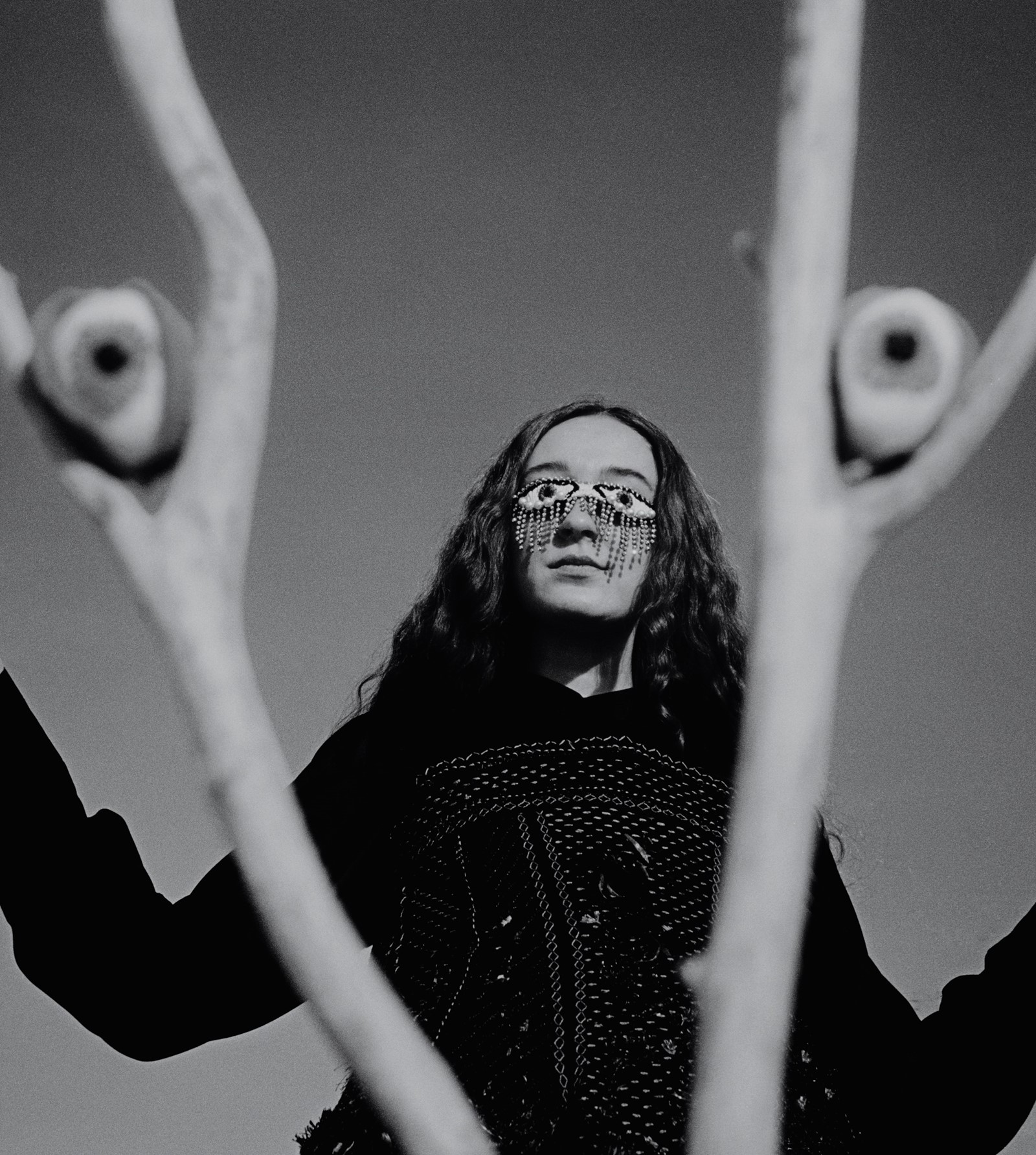
“I like creating objects meant to physically interact with my body: masks, costumes and other wearable objects,” says the artist. “It’s important for me to channel my work through myself. I never shoot my pieces on models, hardly ever loan or sell them. I feel like they’re part of me and should only be associated with me. My family members are an exception, they sometimes appear in my shoots.”
“I never shoot my pieces on models, hardly ever loan or sell them. I feel like they’re part of me and should only be associated with me” – Alice Hualice
Hualice belongs to the new generation of artists who combine intricate craftsmanship and digital storytelling (like Polina Osipova, who creates intricate headpieces and jewellery inspired by Russian folklore, or Daddy Bears, who uses cuddly toys as a tactile and visual language of intimacy). Hualice makes all the pieces herself by hand. “I can’t use the sewing machine, and don’t really like it. I don’t make sketches, but like making ‘post-sketches’ sometimes – after the work is done I make an illustration of it. Ideas come spontaneously: I see an image, get very excited and can’t wait to bring something which exists only in my head into the real world,” she explains. “I sew really quickly, nervously and impatiently, and after the work is complete I often spend a long time observing and touching it. It’s like a personal ritual.”
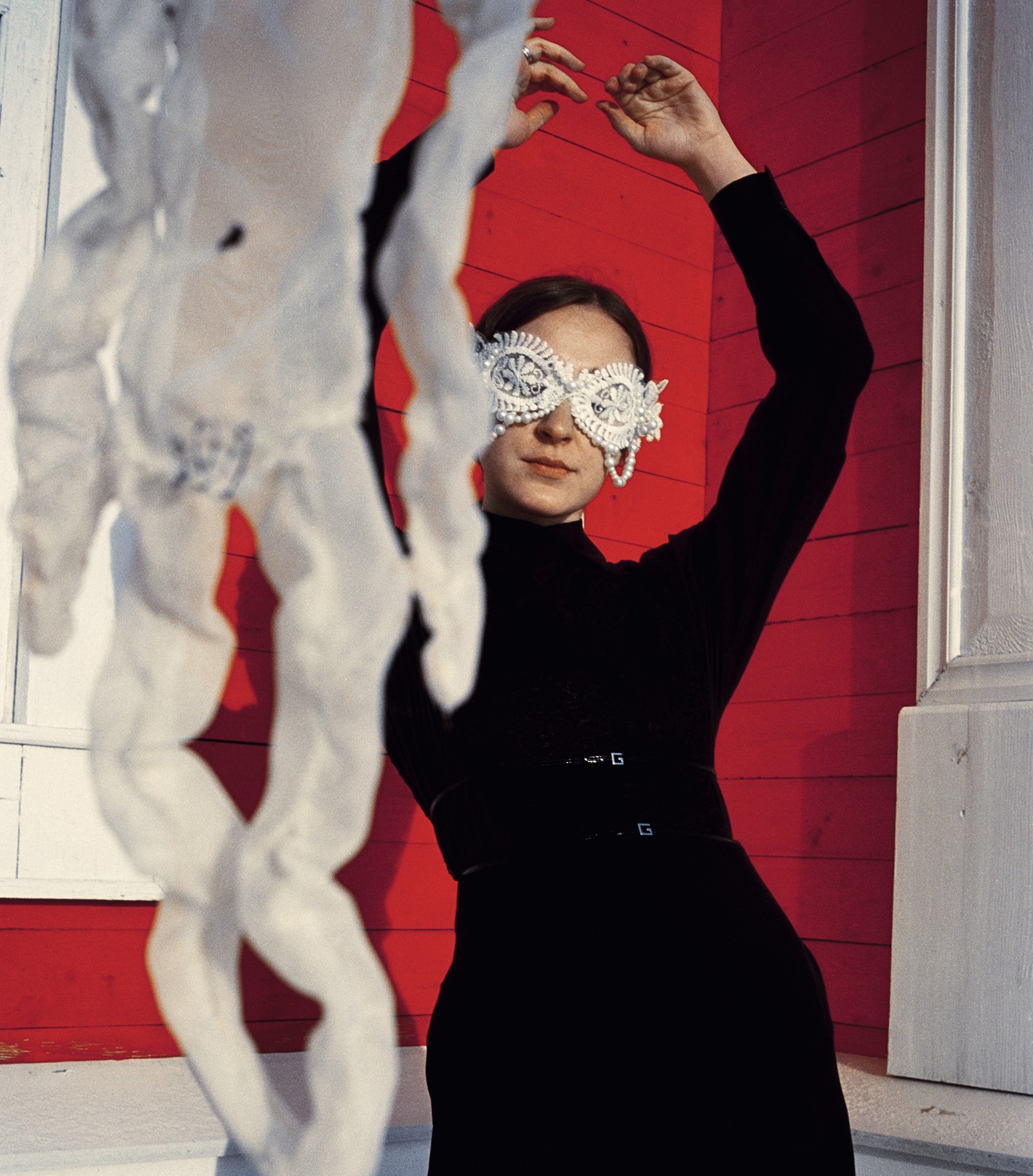
Verbally conceptualising her works for Hualice doesn’t come easily, as her creative process is more about visuals, feelings and intuition – but presenting her creations online is a big part of her practice, and tools like Instagram can be very empowering. “Instagram is my personal gallery which is available to everyone. It’s incredible that anyone could visit the gallery at any time for free. I use it to show my life, the way I create my works, my experience of being an artist. It’s priceless to be able to share the whole process of my creativity.”
“Instagram is my personal gallery which is available to everyone. It’s incredible that anyone could visit the gallery at any time for free” – Alice Hualice
It was on Instagram that AnOther’s Nell Kalonji first encountered Hualice’s work, having been introduced initially by photographer and previous collaborator Jack Davison. She was fascinated both by the pieces and the artist’s point of view, which had blossomed in such a remote location. “She has such a strong voice. It’s not like she lives in Moscow or London or Paris with the best and most innovative art schools. She lives in an industrial city two hours outside of Ekaterinburg and I think you can see it in her work,” Kalonji says. “Although surreal, it is very pure to me and really comes from within her, her experiences and background.” Kalonji collaborated with Davison to photograph Hualice for AnOther Magazine S/S20. “Jack is not a fashion photographer at his core, he is interested in people and scenarios,” Kalonji adds.
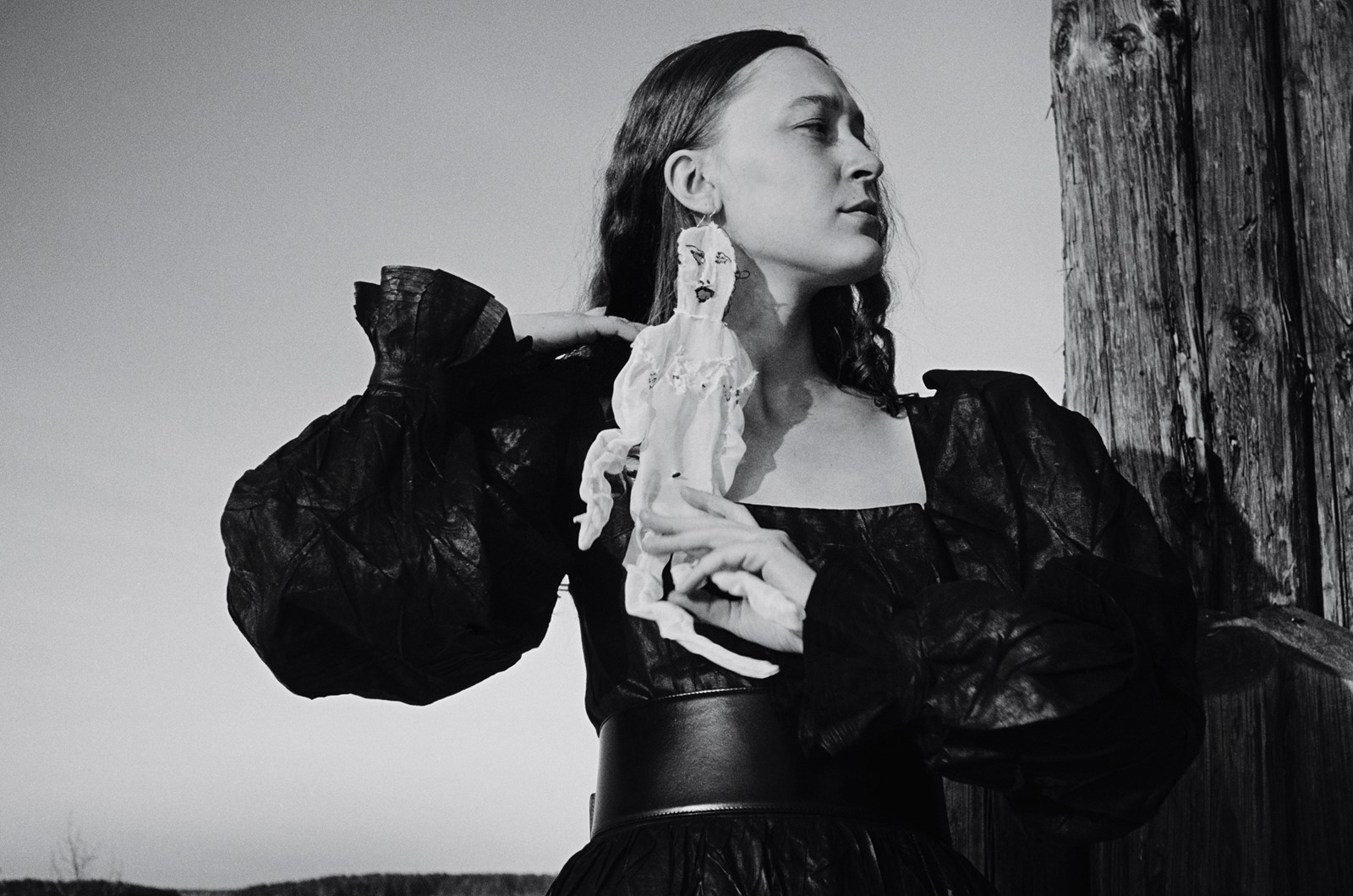
The locations take the viewer on an immersive journey: from Hualice’s flat to the art school where she studied, to the large wooden house she wants to buy to create her own museum, to the picturesque outdoor wooden architecture museum at Nizhnyaya Sinyachikha village. Not only are these places too remote for most to take a real-life journey, it’s a reminder of how many fascinating artistic worlds exist without us knowing, and how precious it is to spotlight this creativity.
“Shooting for AnOther Magazine was a very interesting experience. I like working with different photographers because it’s a chance to see my work differently through other people’s perspective,” Hualice says. “We chose pieces intuitively, and I loved working this way, because it’s very similar to my creative process.”
Talent: Alice Hualice/Alisa Gorshenina. Styling assistant: Rebecca Perlmutar. Producer: Karin Chistyakova at BRS Production. Special thanks to Id Samoilov Nizhnyaya Sinyachikha Museum – Preserve of Wooden Architecture and Folk Art.
A version of this story originally appeared in AnOther Magazine Spring/Summer 2020, which is on sale internationally now.
